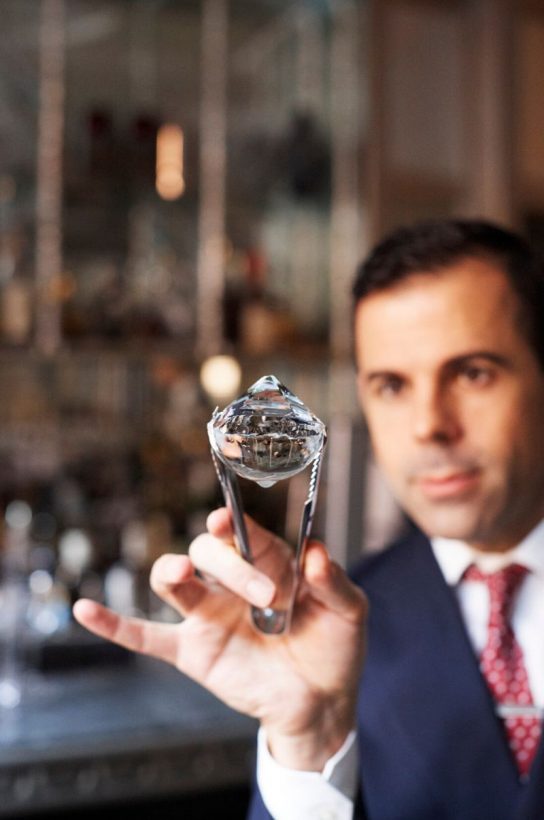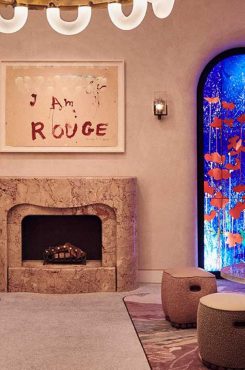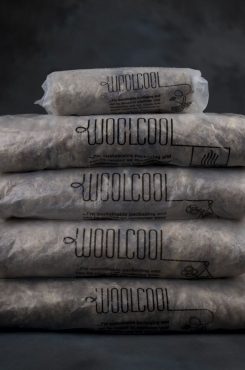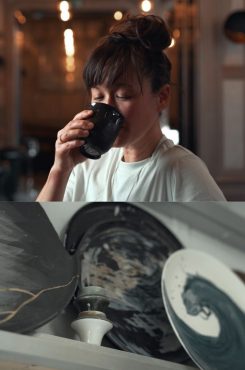In this regular feature, we take a closer look at the workspace of people who inspire us. Here Ago Perrone, director of mixology at the Connaught, talks about the essential equipment for the perfect cocktail. Photographs by Harriet Clare
The Connaught Bar opened on the 08/08/2008. We wanted to have a strong link between tradition, modernity and innovation, so The Connaught Bar needed to merge all these together like the perfect cocktail. At the time there was a clear distinction between an independent bar with creativity and crazy ingredients from all over the world, and then the hotel bar with classic style, attention to detail and elegance. The Connaught wanted to combine these two sides. The challenge was to come up with our own creative process to ensure the guests have the best experience ever. We recently won best bar in Europe and second in the world, at the World’s 50 Best Bars awards. The biggest achievement is that we have been on the list since the beginning and the bar is full every day!
The tools of the trade are the basics of good execution. The quality of the bar tools we use are very important, because they ensure that the technique is executed at its best for the results we want to achieve. There is so many things that you don’t realise until we indicate them, but put them together and they create a symphony.
Service and team
One of our tools is the service we give. Since the start we have aimed to create a fine drinking experience, so it’s not solely about the product, but also the service, which has the biggest impact on the guest’s experience. The welcome at the door by the managers Riccardo Semeria and Maura Milia is smiley and warm. The experience begins with a welcome drink (a different recipe every day), so the guests feel at ease, and at the end we gift our guests a cocktail card to keep as a memory of their visit. Giorgio Bargiani, the head mixologist (see page 17), supports me to ensure the creative process is always innovative yet coherent to the Connaught Bar style which I started 11 years ago. The entire team enthusiastically supports the managers and contributes ideas. You can’t explain the personal touch, people tend to forget it nowadays.
The trolley
Not everybody comes for the cocktails, but after a little while, they start to fall in love with the other elements which are part of The Connaught Bar. The guests see the trolley going along, and even if you’re not a martini drinker you become curious and want to see it. This trolley is the second version, created in collaboration with Tanqueray gin, for our 10th anniversary. We wanted to find a way to interact with the guests, so this martini experience was the perfect tool for us.
Bar equipment
The mixing glasses are designed by John Jenkins, and the decoration recalls elements of the bar and chandelier. The bar spoon is designed by Erik Lorincz, who I opened the bar with! Stirring is very important because you allow the ingredients to be blended without adding too much oxygen. This bar spoon is the perfect spiral which allows the hand to be soft, so you can serve the cocktail smoothly and silently. You can be in church and no one would realise you’re making a martini! We’re very famous for our pouring: our signature is pouring and squeezing the lemon at the same time. If you see someone squeezing the lemon close to the glass or on the rim with the lemon twist, ask them to make you a new martini, because they will ruin the palate. The shaker is also designed by Erik Lorincz and it’s made in Japan. The inside is polished in a circular motion so that ice doesn’t break when it swirls around.
Ice
We like to say that bartenders work with ice and chefs work with fire. Pure quality ice means pure quality water which means a pure quality cocktail, because water in dilution is considered as one of the ingredients. In our martini we use slow frozen ice, so it is very pure and melts very slowly, allowing for silkiness on the palette. A 30kg block arrives around 10am or 11am every day and we cut it all in slices and chunks here.
Ice mould
One ice mould makes ice spheres and the other makes ice diamonds. We were the first bar in Europe to use this machine; it’s very heavy! It works with gravity and the interchange of temperature.
The glass of No. 11
Every morning the team come here at 6am to begin preparation, cutting the ice, cooking homemade ingredients and preparing the room ready for service. Additionally, the process of painting the glasses happens every morning, so depending on their mood there is different patterns. It’s very important that the glass feeds the identity of the cocktail: the martini is quite a sharp cocktail, so you want something more angled. The number 11 (martini for their 11th anniversary) is a bit rounder as a cocktail, so we want to put it in a softer glass.
Bitters
We created an infusion of homemade bitters, so if you’re a gin lover we can help you understand how with a certain flavour you can release certain botanicals of the gin. We have lavender for what we call the massage martini, because lavender relaxes the soul and gin relaxes the muscles! Then we have Tonka beans, part of the vanilla family, mixed with apricot kernel for a marzipan aroma. The third is coriander seeds, which is a botanical very common in gin. Then the last one is our signature Dr. Ago, which I designed five years ago implementing a truly Italian flavour, Bergamot (dear to the English because it gives the signature flavour of earl grey tea), mixed with ginseng. We start by painting the inside of the glass with the bitter followed by our signature pour.
Connaught Bar gin
You can feel that the bottle is part of The Connaught Bar elegance and heritage. We love the whole concept because we wanted to have a spirit that could capture ten years of the bar, of stories, of guest interaction, of cocktails… and gin was the master. The bottle recalls the shape of a cocktail shaker, and the green colour matches the elements of the bar. It is handmade in-house.
We do the distillation, bottling and put the labels on by hand in the gin room downstairs. The 1st edition for the 10th anniversary is vintage, and we only made 1000 bottles. The basis is a London dry gin, juniper berry, coriander seeds, angelica, orris root, lemon grass, lemon verbena, liquorice, then we add three botanicals. One is mace, then we have a lifestyle botanical of Amalfi lemon because we like to tell a story and make the guests feel the warm of sunshine. Storytelling itself is one of the tools of the trade, because just a cocktail on its own is beautiful and tastes fantastic, but if you know how to tell a story in the right manner to the guests, you can connect with them. The other botanical is unique and attached to the heritage of this environment: the gin room is next to the wine cellar, so I decided to use Bordeaux wine as the botanical, which added to the rest of the botanical gives hints of minerality, viscosity on the palate and fruitiness.
Vermouth
Our martini is five parts gin and one part vermouth. The vermouth gives the hint of aromas. We do a blend: extra dry, aromatic and sweet, so blended they give a fuller boquet of aromas which nicely match with the gin.
Aerator
We wanted to take our classic to another level with the number 11 to celebrate 11 years of the bar. We wanted it to be as if we were pouring it from an 11-storey building. We were in a tapas restaurant in Barcelona and they served a bottle of cider to us in this aeration machine, so I looked at Giorgio, my right hand man, and he looked at me, and we went on Amazon and we ordered it straight away! The cocktail is premixed, and we simply press the button and allow the cocktail to be poured. You can see the bubbles forming, as if it was being poured from 11 storeys up!”
As told to Harriet Prior
This article was first published in the Winter 2019 Issue of the CODE Quarterly. To subscribe, click here



